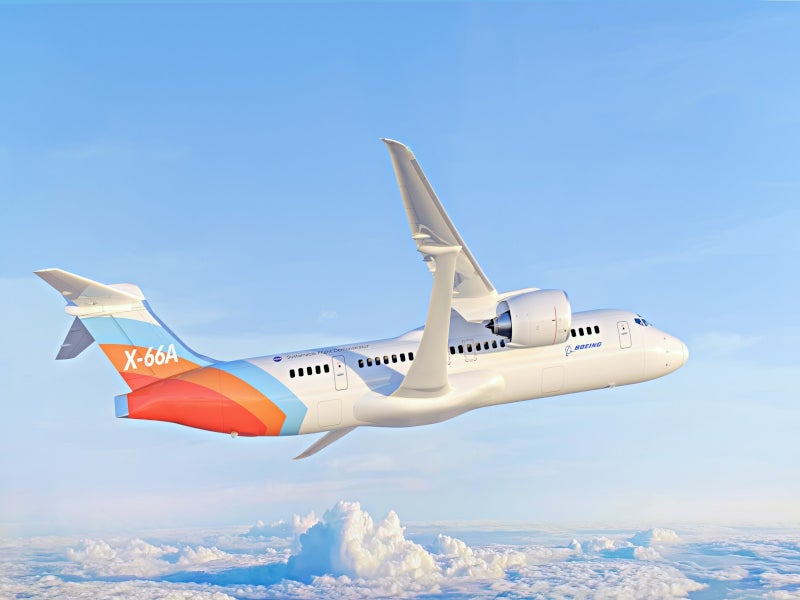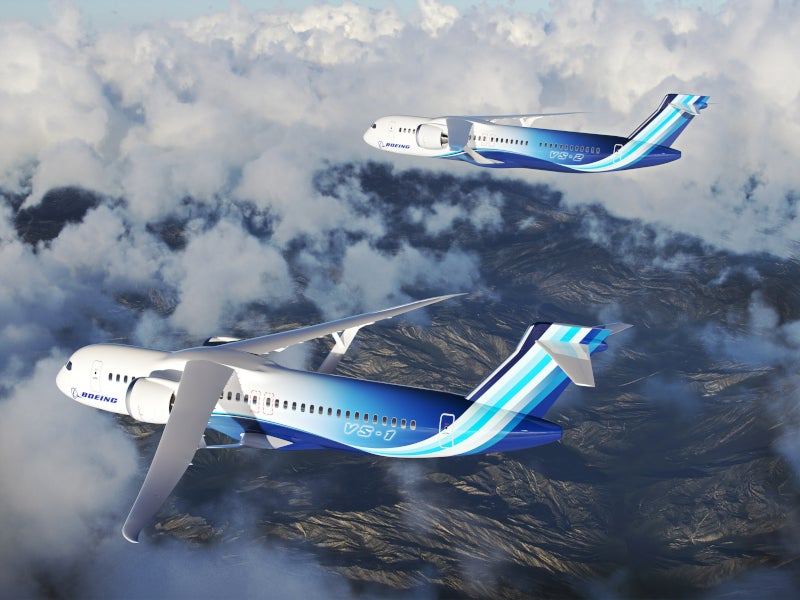The National Aeronautics and Space Administration (NASA) is developing a first-of-its-kind Transonic Truss-Braced Wing (TTBW) demonstrator aircraft under its Sustainable Flight Demonstrator (SFD) programme for sustainable aviation.
NASA selected US-based aerospace company Boeing to develop and flight-test a full-scale TTBW demonstrator aircraft for the programme in January 2023.
The US Air Force designated the aircraft as the X-66A in June 2023. It will be the first X-plane to support the goal of achieving net-zero aviation greenhouse gas emissions by 2050 in line with the White House’s US Aviation Climate Action Plan.
X-planes serve as experimental platforms for evaluating innovative aircraft configurations and technologies, which can subsequently be incorporated into future aircraft designs.
The demo aircraft is expected to take its first flight in 2028 from NASA’s Armstrong Flight Research Center at Edwards Air Force Base. It is anticipated to enter service in the mid-2030s.
X-66A sustainable flight demonstrator aircraft details
X-66A TTBW demonstrator aircraft will be developed by modifying an MD-90 aeroplane, which flew to Boeing’s facility in Palmdale from Victorville, California, in August 2023.
The key modification will include the replacement of the existing wings with a pair of thinner and longer wings. The fuselage of the aircraft will also be shortened and the engines will be replaced.
The extended and slender wings of the aircraft with a wingspan of 145ft, bolstered by aerodynamic diagonal trusses, will lead to reduced aerodynamic drag.
The ultrathin wings supported by extended struts with greater spans and higher aspect ratios can accommodate advanced propulsion systems, which face limitations due to the constrained underwing space in contemporary low-wing aeroplane designs.
The TTBW design will have the potential to achieve a 30% reduction in jet fuel consumption and significantly reduce emissions compared to a conventional airliner.
Engine details
The demo aircraft will be powered by Pratt & Whitney GTF™ engines mounted under the wings. The geared fan architecture of the engine offers fuel efficiency and sustainability benefits.
The engine will be encased in Collins’ nacelles, which are made of lightweight and durable composite and metallic materials. The nacelles also serve various functions such as protecting the engine, managing airflow, reducing noise, and enabling thrust reversal to aid in slowing down the aircraft during landings.
The control system components for the GTF engine include heat exchangers, integrated fuel pump and control, air turbine starter, and electronic controls. In addition, the engine is certified to operate with sustainable aviation fuel (SAF).
Funding details
The project involves an investment of approximately $1.15bn, with NASA providing $425m in funding through the SFD Space Act Agreement and Boeing contributing an additional $725m to develop the demonstrator programme and fulfil its resource requirements.
Contractors involved
Boeing contracted the US-based aerospace and defence company RTX to deliver propulsion and electric power systems for the X-66A demo aircraft in October 2023.
The project will be supported by Pratt & Whitney and Collins Aerospace, two business units of RTX. They will also support ground and flight tests of the aircraft.
Collins Aerospace will also provide the control system components for the engine.
Sustainable flight demonstrator programme details
The SFD programme aims to provide insights for the development of a next-generation environmentally friendly single-aisle aircraft that reduces fuel consumption and emissions by 30% compared to currently used aircraft by passenger airlines globally.
The technologies validated under the programme may potentially shape future aircraft designs and pave the way for significant advancements in aerodynamics and fuel efficiency for use in the next-generation airliners.
The programme is part of NASA’s Integrated Aviation Systems Programme and plays a crucial role in the agency’s Sustainable Flight National Partnership, which is dedicated to advancing innovative technologies for sustainable aviation.










